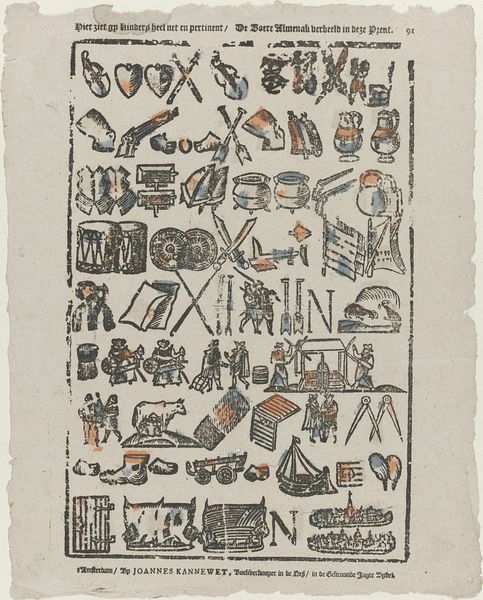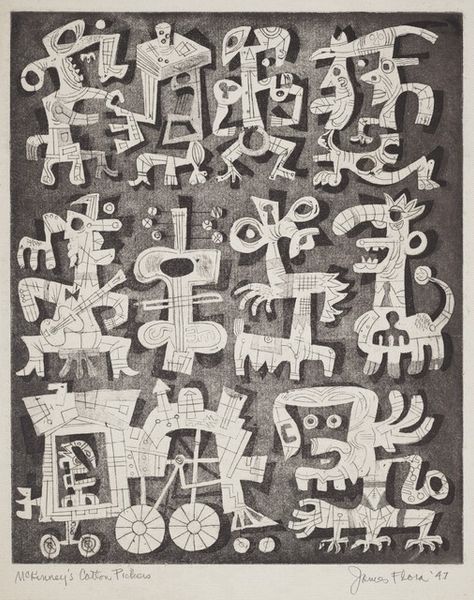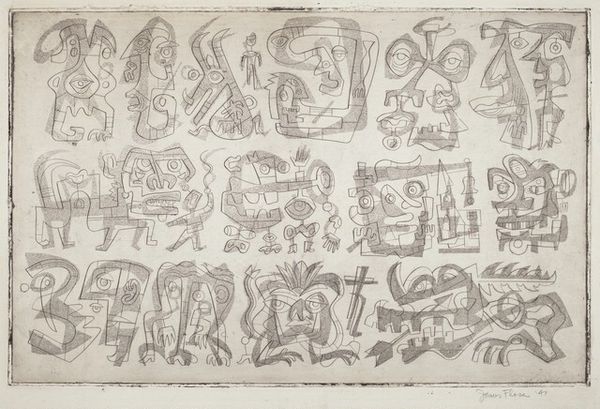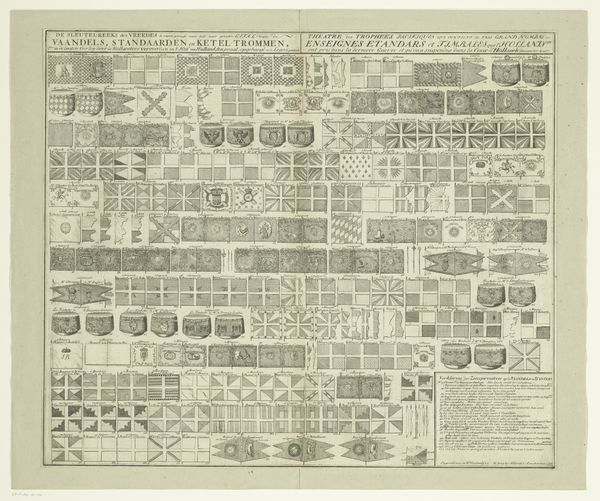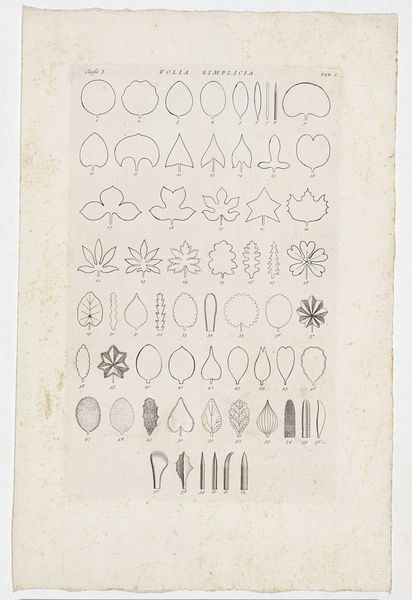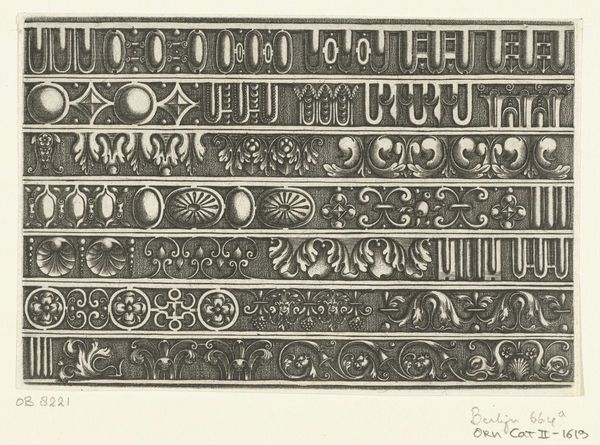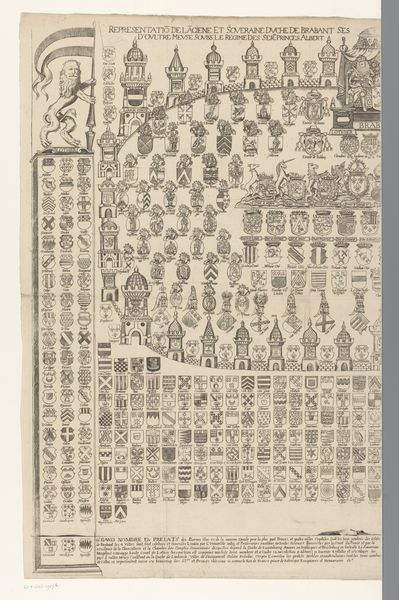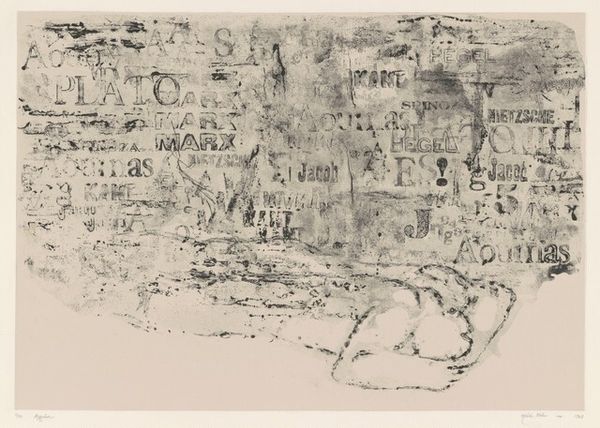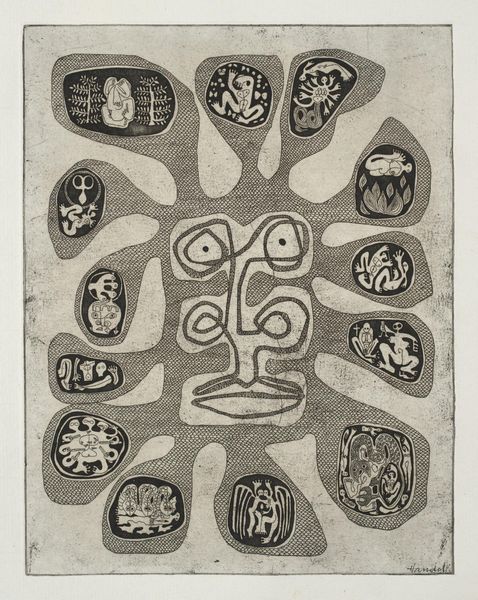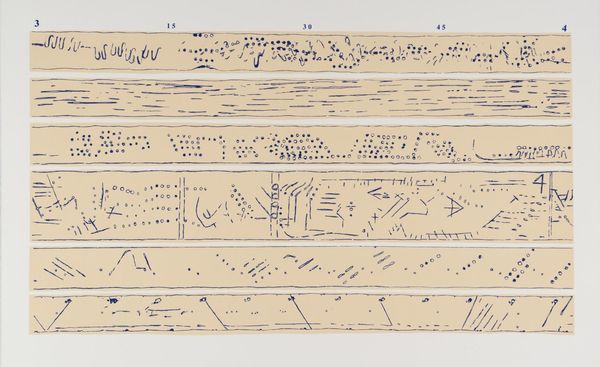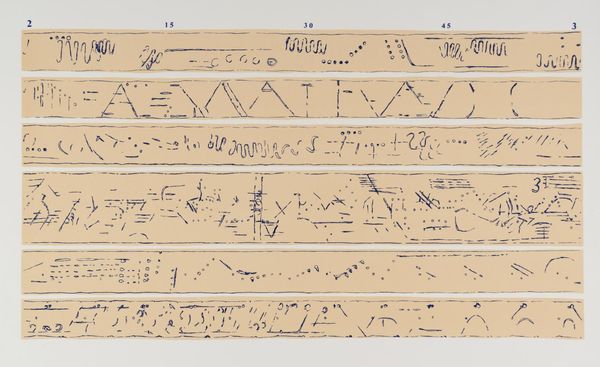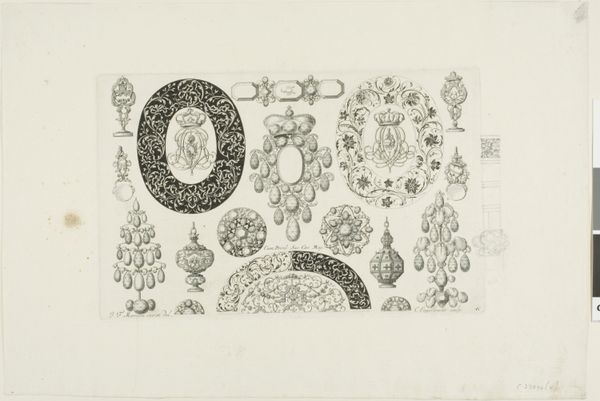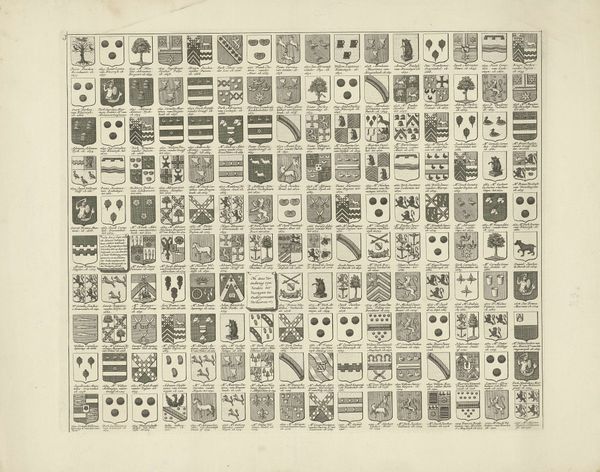
drawing, print, etching, paper, ink
#
abstract-expressionism
#
drawing
# print
#
etching
#
paper
#
ink
#
geometric
#
abstraction
Dimensions: image: 126 x 177 mm sheet: 190 x 256 mm
Copyright: National Gallery of Art: CC0 1.0
Curator: Dorothy Dehner's "The Letter," an etching on paper created in 1953, offers us a fascinating glimpse into her exploration of abstract expressionism. Editor: Immediately, I'm struck by the intricacy, like a coded message or an aerial view of some strange, minimalist city. It's a grid of interlocking shapes that feels both playful and strangely formal. Curator: Dehner, during this period, was deeply embedded in the New York art scene. Her work reflects a wider trend of artists grappling with post-war anxieties and seeking new visual languages. We see geometric forms that act almost as symbolic building blocks for the unconscious. The printing medium is notable, too; printmaking democratized artwork in important ways. Editor: I wonder if the title, "The Letter," is deliberately misleading. It hints at communication but presents us with a visual puzzle. Each shape, line, and mark might represent something deeply personal for Dehner, but the overall effect veers away from anything legible, creating a distance. Curator: Perhaps that distance is key. During the 1950s, abstract art offered a powerful counterpoint to the representational demands of propaganda and state-sanctioned art in other countries. The refusal to depict the familiar was itself a statement. Editor: I agree, but I think we also need to recognize that women abstract expressionists, like Dehner, faced very particular battles for visibility within a male-dominated art world. The 'objective' readings of this work often sidestep questions of gendered experience and creative labor. I see that embedded in her lines. Curator: It is important to look at these works through an intersectional lens. Examining this print from a broader view enables viewers to see how her position as a woman, her relationships and environment play into what it shows and suggests. The use of negative space as form adds yet another element for consideration and contemplation. Editor: This makes us reflect on all those personal and collective contexts that can form what appears as the hidden or private dimensions within it. "The Letter" urges us not just to see, but to decode the marks of her era. Curator: Indeed, and in turn this abstract language transcends the immediate context. Editor: A timeless commentary, one could say.
Comments
No comments
Be the first to comment and join the conversation on the ultimate creative platform.
